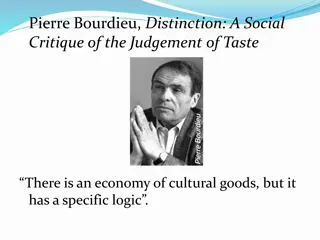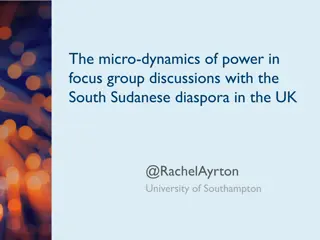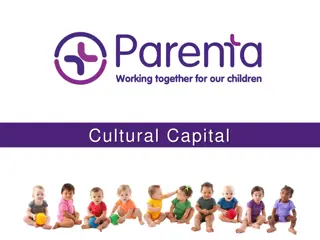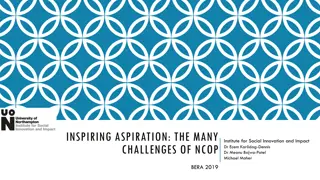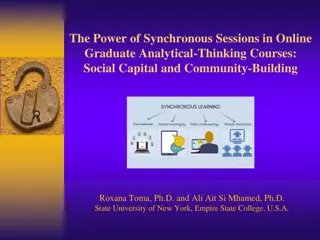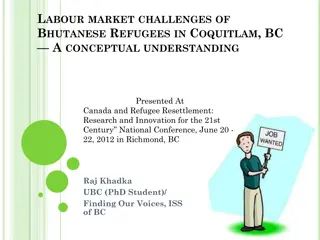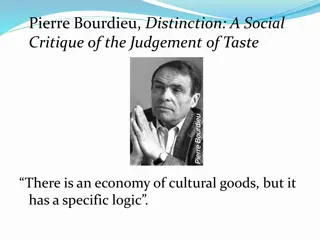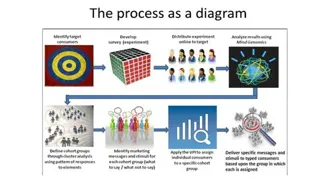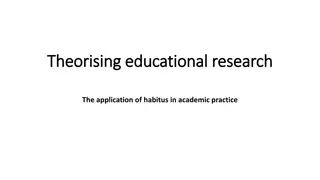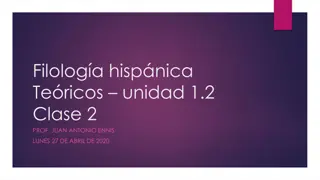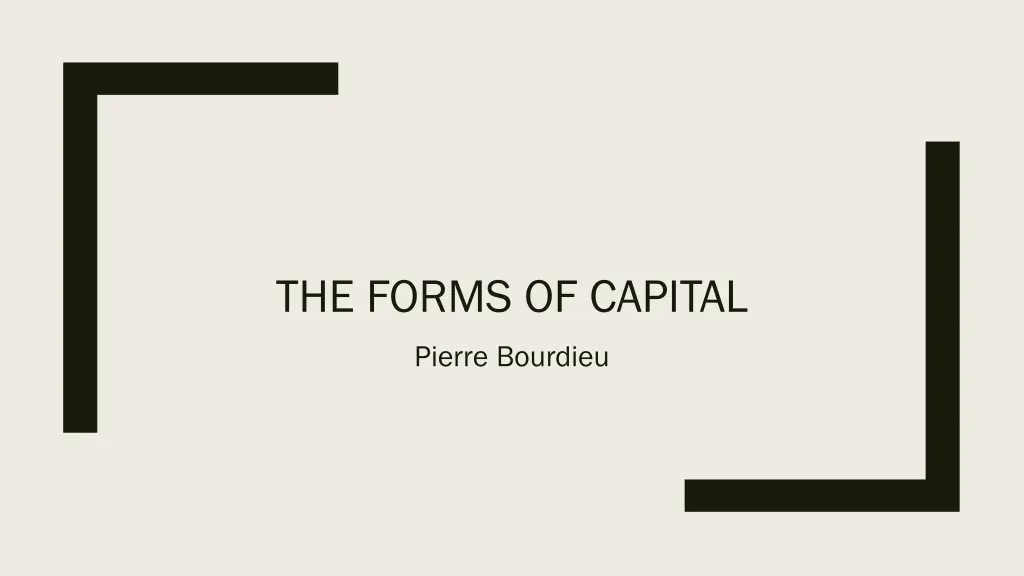
Forms of Capital and Social Inequality
Explore Pierre Bourdieu's concept of different forms of capital - economic, cultural, and social - and how they contribute to social inequality. Understand the impact of cultural capital on academic achievement and the role of families in accumulating and mobilizing these resources.
Download Presentation

Please find below an Image/Link to download the presentation.
The content on the website is provided AS IS for your information and personal use only. It may not be sold, licensed, or shared on other websites without obtaining consent from the author. If you encounter any issues during the download, it is possible that the publisher has removed the file from their server.
You are allowed to download the files provided on this website for personal or commercial use, subject to the condition that they are used lawfully. All files are the property of their respective owners.
The content on the website is provided AS IS for your information and personal use only. It may not be sold, licensed, or shared on other websites without obtaining consent from the author.
E N D
Presentation Transcript
THE FORMS OF CAPITAL Pierre Bourdieu
Normative Belief in Life Roulette imaginary universe of perfect competition or perfect equality of opportunity Reality: heredity and acquired properties accumulation
Reality of the World Structure of the distribution of different types of capital represents the immanent structure of the social world Set of advantages and constraints inscribed in the reality of life
Types of Capital Economic money/property Cultural capital knowledge/educational credentials Social capital networks/connections
Cultural Capital ** notion of cultural capital made it possible to explain the unequal academic achievement of children from different social classes Norm academic success/failure is an effect of natural aptitudes
Cultural Capital ** Academic ability/talent is itself the product of an investment of TIME and cultural capital ** Scholastic yield from education cultural capital invested by family mobilized by Social Capital
Embodied State ** Accumulation of Cultural Capital starts at the outset only for families endowed with Cultural Capital Covers the entire period of socialization; specifically free from TIME from economic necessity; ** precondition for initial accumulation **External wealth converted into an integral part of the person recognized as legitimate competence; as inherent in the person
Objectified State Material objects: Books Writings Paintings Art ** can be appropriated both symbolically or materially obtain profits based on mastery of the object
Institutionalized State Academic qualifications certificate of competence ** Performative magic of the power of instituting impose recognition Chance of profit offered specific to types depend on scarcity and investment
Social Capital Network of institutionalized relationships of mutual acquaintance and recognition: membership in a group provides members with collectively owned capital credentials that entitles them to credit i.e. family name size of the network s/he can mobilize and the volume of capital possessed by each group as homogenous as possible Reproduction continuous series of exchanges in which recognition is offered and reoffered
Conversions Economic capital is at the root Transmitted by family Ability to purchase time Transmission of Cultural Capital Delay entry into the work force Prolonged schooling Invisible in the process of status attainment
Entitlements Birth determines transmission of entitlements Institutional mechanisms control the official direct transmission of power and privilege
Unequal Childhoods: class, race and family life Annette Lareau The life of an individual cannot be adequately understood without references to the institutions within which his biography is enacted. C. Wright Mills
Concerted Cultivation and Natural Growth Invisible yet powerful ways that social class impacts children s life experiences: Middle-class: discussions developing talents entitlement Working-class: clear boundaries directives constraint Influence on institutional experience
Class based meaningful child-rearing patterns **Family life coheres to a form of cultural logic of child rearing **Shape the ways that children see themselves in relation to the social world Entitlement vs. Constraint
Schools as Middle-Class Institutions Middle class parenting Result in a dominant set of cultural repertoires Talking with children: reasoning and negotiation rather than physical force Developing their interests children as products Active role in schooling **Lead to transmission of differential advantages
Social Structure and Daily Life Concerted Cultivation structured activities, language development, reasoning skills and intervention in the school intense demands of parents, focus on individualism, exhausts children, argue/question/disparage parents Natural Growth hang out, play w/ relatives, clear directives, limited negotiation **More autonomy
Conclusion Common economic position tied to differences in cultural logic of child rearing ** Unpack the mechanism through which social class conveys advantages in daily life; social class differences influence the pace and rhythm of daily life.

